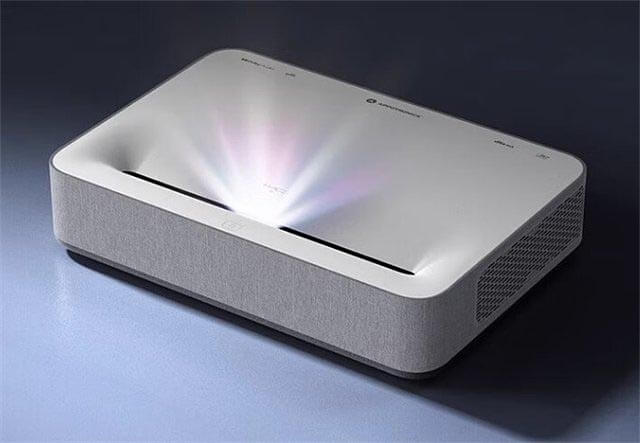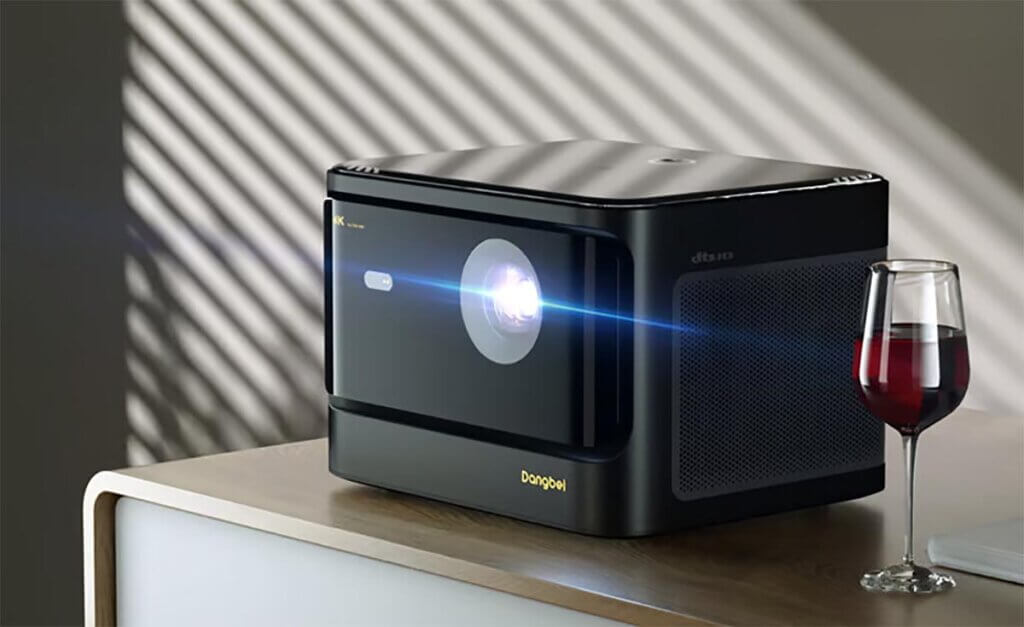More and more people are bringing the cinematic experience into their homes, whether for watching movies or playing games. While traditional long-throw projectors are still widely used in home setups, laser TVs—also known as ultra short throw projectors—are quickly emerging as a new trend in modern home entertainment.
Both technologies serve as core components in today’s home theater systems, but they differ significantly in terms of how they work and where they’re best used. In this guide, we’ll break down the key differences between laser TVs and projectors to help you decide which is better suited for your needs.

How They Work
Laser TVs:
Laser TVs use laser light sources to create images. These light beams are split into red, green, and blue using a color wheel or optical modulators, and then projected onto a screen to form the image. Most laser TVs come with a dedicated ambient light-rejecting (ALR) screen, which helps maintain sharp contrast and clarity even in bright environments.
Traditional Projectors:
Conventional projectors typically use either lamp-based or LED light sources, projecting images through a lens onto a wall or screen. While effective in dark settings, these light sources tend to have shorter lifespans and require low-light environments for optimal performance.
Image Quality
Laser TVs:
With their high brightness, wide color gamut, and superior contrast, laser TVs perform exceptionally well in well-lit spaces. The use of an ALR screen helps minimize ambient light interference, resulting in consistently vivid and sharp images.
Traditional Projectors:
Standard projectors can deliver excellent image quality in dark rooms, but they tend to struggle in brighter settings, where ambient light can wash out the image. While premium models can compete in brightness and color accuracy, they generally still fall short compared to laser TVs in well-lit conditions.

Ideal Use Cases
Laser TVs:
Best suited for living rooms or home theaters where ambient light is present. Their larger screen sizes and ultra short throw design make them ideal for immersive big-screen experiences, even in tight spaces.
Traditional Projectors:
Great for dark environments like dedicated home theaters, classrooms, or meeting rooms. These devices are generally smaller and more portable, making them easier to install or move around. They also offer flexibility in screen size and placement.
Space Requirements
Traditional projectors, especially long-throw models, require more distance between the device and the screen to project a large image. This also means additional space for wiring—usually about half a meter or more behind the projector.
Laser TVs, on the other hand, use reflective ultra short throw (UST) projection technology, allowing them to cast a 100-inch image from just 20 centimeters away. This makes them perfect for users with smaller living rooms or limited viewing distance, without compromising image geometry or clarity.
Pricing & Maintenance
Laser TVs:
While more expensive upfront, laser TVs offer longer-lasting performance with light sources that typically last over 20,000 hours. They also require minimal maintenance, making them a cost-effective solution in the long run.
Traditional Projectors:
These are generally more budget-friendly, but come with shorter lamp lifespans (usually 2,000 to 5,000 hours). Over time, the need to replace bulbs or LED modules adds to the total cost of ownership. High-end projectors may rival laser TVs in price, but still require consideration of recurring maintenance costs.
Conclusion
Laser TVs are ideal for users who value premium image quality, want to use their setup in bright rooms, and prefer a fixed, large-screen installation.
Traditional projectors are better suited for those on a tighter budget, who need portability and flexibility, and plan to use the device primarily in dark environments.
Ultimately, your choice depends on your usage scenario, room setup, and budget. If you’re aiming for a high-end, theater-like experience and can invest accordingly, a laser TV is a compelling option. If you’re looking for an affordable and flexible solution, a traditional projector remains a solid choice.
Related Reading:




